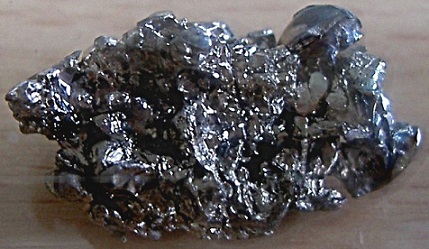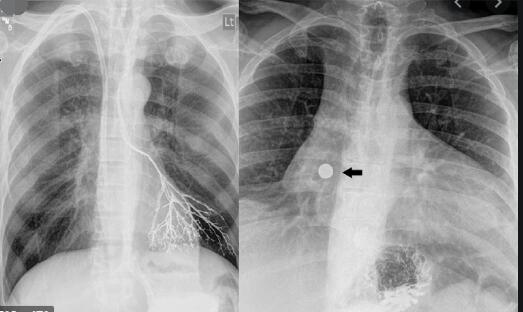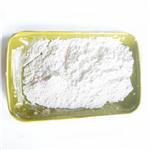Exposure Sources & Risk Assessments of Barium
Mar 5,2020
First aid: Skin: Remove contaminated clothing; wash skin with plenty of water and soap. Eyes: Flush eyes with plenty of water. Inhalation: Fresh air, administer oxygen, if necessary. Ingestion: Rinse mouth; induce vomiting in conscious patients, seek medical attention immediately
Target organ(s): Respiratory system, eye, skin, immune system (allergic reactions), central nervous system, and heart
Occupational exposure limits: OSHA PEL: 0.5 mg/m3 (soluble compounds), 15 mg/m3 (barium sulfate dust), TLV: 0.5 mg/m3 as TWA A4 (not classifiable as a human carcinogen); (ACGIH, 2008). EU OEL: 0.5 mg/m3 as TWA (EU 2006)
IDHL barium chloride levels of 50 mg/m3 (NIOSH) Reference values: 0.56 mg/kg/day with UF of 300 Risk phrases: 11–14/15
Flammable. Reacts violently with water, liberating highly flammable gases
Safety phrases: 7/8-30-43
Keep container tightly closed and dry. Never add water to this product
SOURCES OF EXPOSURE

Occupational
The majority of occupational exposures to barium occur via inhalation in barium sulfate and barium carbonate miners and processors. Recent estimates indicated that more than 10,000 individuals were at risk of occupational exposures to barium and up to 474,000 may have been exposed to barium compounds. When individuals must work around high levels of bariumcompounds, engineering controls are recommended to limit exposure. Since the respiratory route is the most important occupational route, respirators are recommended if engineering controls are inadequate (Moreton and Jenkins, 1985). The irritating nature of several barium compounds indicates that protective clothing and eye wear are needed for those working with these substances. If the skin becomes contaminated with barium compounds, it should be washed as soon as is practical. Fugitive dust inhalation is a common source of occupational exposures in barium processing and mining facilities.
Environmental
Barium is the fourteenth most abundant element in the earth’s crust. As previously stated, barium and barium compounds exist in varying concentrations in all environmental media (Zielinski, 2011). Studies indicate that bioaccumulation is possible. The geometric mean for the urinary bariumacross all ages was 1.44 (1.31–1.58) μg per gram of creatinine. No information has been collected regarding populations living close to hazardous waste sites with high levels of barium. Recent data on barium levels in plants and ambient air, soils, and groundwater, particularly from NPL sites, are necessary to close this data gap.
INDUSTRIAL HYGIENE

The Occupational Safety and Health Administration (OSHA) and the American Conference of Governmental Industrial Hygienists (ACGIH) have set the permissible exposure limit (PEL) and the threshold limit value (TLV), respectively, for soluble barium salts, barium nitrate, barium oxide, barium carbonate, and barium chloride at 0.5 mg/m3 (Table 8.2) (OSHA, 1996). These criteria are based on the fact that excessive exposure to these compounds may result in irritation of the eyes, nose, throat, and respiratory tract. Several of these compounds are strongly alkaline, which contributes to their irritancy. The PEL for insoluble barium sulfate is 10 mg/ m3 total dust or 5 mg/m3 respirable dust. This is based on the potential for barium sulfate to cause a benign pneumoconiosis associated with very high exposure levels .The greatest potential for exposure to barium compounds exists in the mining and processing of barium-containing ores, in the production of barium compounds from barium sulfate, and in the incorporation of barium compounds into commercial products.
RISK ASSESSMENTS
Recently the EPA updated the oral RfD for barium exposure from 0.7 to 0.6 mg Ba/kg/day. The update was based on longterm animal data in the absence of long-term human data. The EPA determined that human and animals metabolize barium in similar ways; therefore, animal data present an excellent tool for modeling the acute and chronic health effects of exposure in humans. The EPA has evaluated the potential carcinogenicity of barium and classified it as Group D (not classifiable as to human carcinogenicity).
REFERENCES
IPCS (1999) Barium, INCHEM. Concise International Chemical Assessment Document 33, Geneva, Switzerland: World Health Organization.
Johnson, C.H. and VanTassell, V.J. (1991) Acute barium poisoning with respiratory failure and rhabdomyolysis. Ann. Emerg. Med. 20(10):1138–1142.
McCauley, P.T. and Washington, I.S. (1983) Barium bioavailability as the chloride, sulfate, or carbonate salt in the rat. Drug Chem. Toxicol. 6(2):209–217.
Moreton, J. and Jenkins, N. (1985) Barium in welding fume. Ann. Occup. Hyg. 29(3):443–444.
Morton, W. (1945) Poisoning by barium carbonate. Lancet 249: 738–739.
- Related articles
- Related Qustion
- Exploring the Significance of Barium Chemistry in Soil Distribution and Plant Uptake Mar 27, 2024
Barium chemistry studies its reactivity, distribution in soils, uptake by plants, and environmental impact for industrial and ecological relevance.
- Barium: Discovery, Sources and the Use in Fireworks Jan 24, 2024
Barium is a soft silvery metal, always found combined with other elements. Barium emits a green flame when it burns, which is used to create the green effect in fireworks.
- Barium: resource, applications and toxicity Sep 20, 2023
Barium is a valuable resource, used in diverse industries. China leads in production, but its toxicity requires further research.
Arsenic (As; CAS #7440-38-2) is a brittle solid with a metallic coloring that ranges from silver to gray. It is a naturally occurring element found in the earth’s crust,....
Mar 5,2020InhibitorsBeryllium (Be; CASRN 7440-41-7) is the lightest structural metal known to exist at this time. It is stronger than steel by 40%, its dimensional stability, favorable stiffness-to-weight ratio, high thermal conductivity, high melting point.....
Mar 5,2020Inorganic chemistryBarium
7440-39-3You may like
- Crystal Structure of Aluminum Selenide
Apr 23, 2024
- Crystal Structure and Property of Tin Selenide
Apr 23, 2024
- Crystal Structure of Uranium Carbide
Apr 22, 2024







